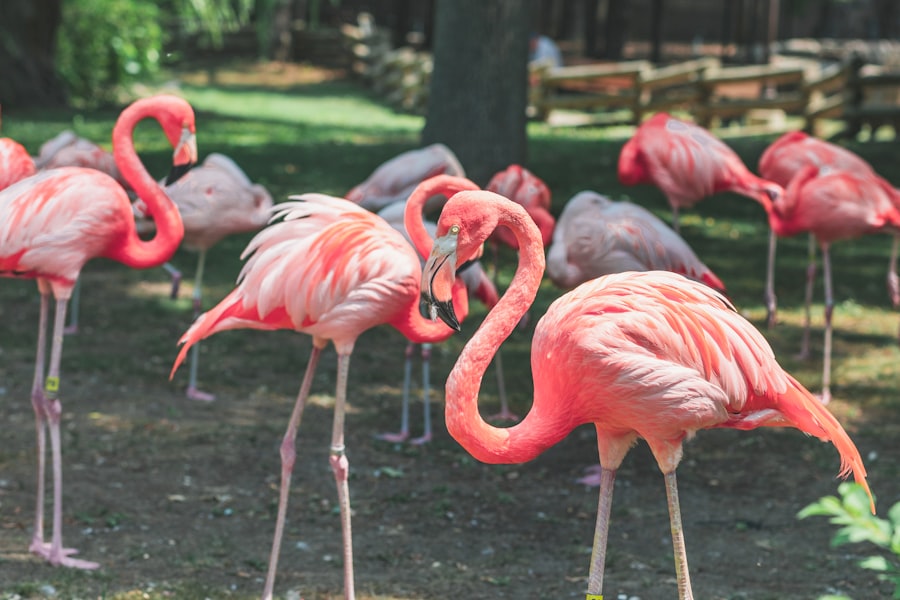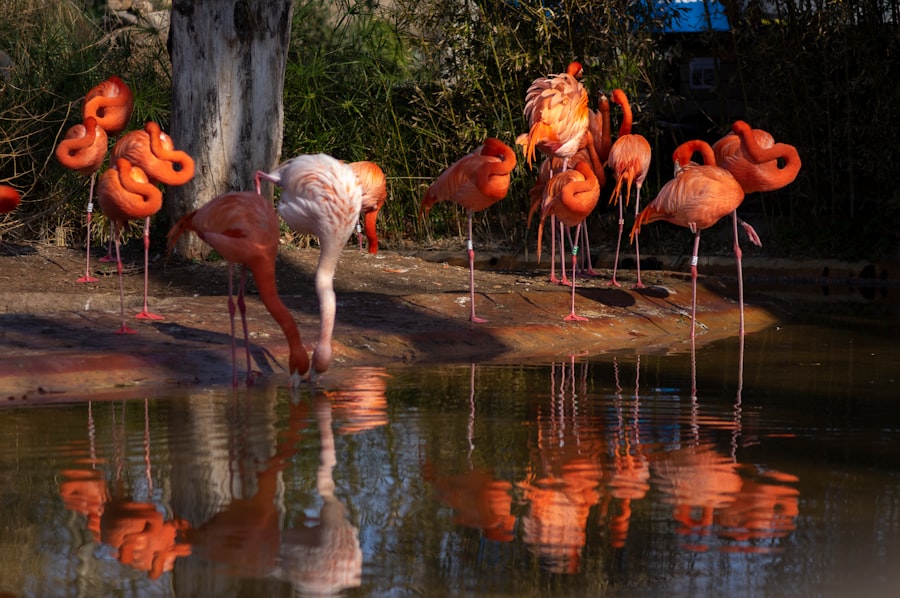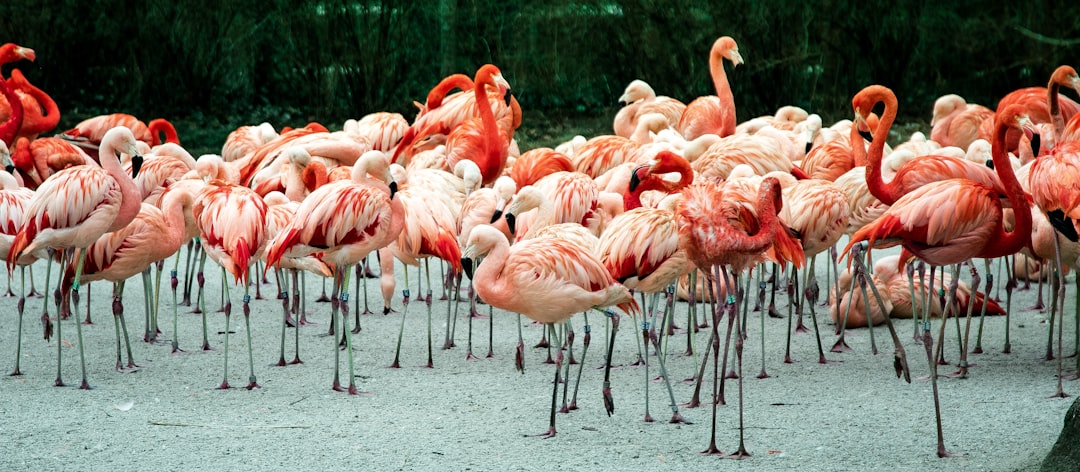The avian world is a treasure trove of colors, but few hues captivate the imagination quite like pink. Pink birds, with their striking plumage, are not only visually stunning but also represent a diverse array of species across various habitats. From the flamboyant flamingos that grace wetlands to the delicate roseate spoonbills that inhabit marshes, the spectrum of pink birds is as varied as it is enchanting.
Each species boasts unique adaptations and behaviors that contribute to their survival in the wild, making them a subject of fascination for ornithologists and birdwatchers alike. Among the most iconic pink birds is the flamingo, known for its long legs and neck, which allow it to wade through shallow waters in search of food. Flamingos are social creatures, often found in large colonies that can number in the thousands.
Their vibrant pink coloration is a result of their diet, which consists primarily of algae and small crustaceans rich in carotenoids. Another remarkable example is the roseate spoonbill, which is easily identifiable by its distinctive spoon-shaped bill and striking pink feathers. These birds are often seen foraging in shallow waters, using their unique bills to sift through mud for food.
The diversity among pink birds extends beyond these two examples, encompassing a range of species such as the pink-footed goose and the lesser flamingo, each contributing to the rich tapestry of avian life.
The Science Behind the Pink Plumage
The captivating pink plumage of many bird species is not merely a product of genetic chance; it is deeply rooted in biology and ecology. The color pink in birds primarily arises from carotenoids, organic pigments found in various foods that birds consume. These pigments are responsible for the vibrant hues seen in many species, including those with red, orange, and yellow feathers.
In the case of pink birds, their diet plays a crucial role in determining the intensity and shade of their plumage. For instance, flamingos derive their pink coloration from carotenoids present in the algae and brine flies they eat. The more carotenoids they consume, the more vivid their feathers become.
The process of color development in birds is complex and involves both physiological and environmental factors. Carotenoids are absorbed in the digestive system and then deposited in the feathers during molting. Interestingly, the ability to produce vibrant plumage can also be an indicator of health and vitality.
Birds with brighter colors are often perceived as more attractive by potential mates, as this can signal good foraging skills and overall fitness. This phenomenon is known as sexual selection, where certain traits become more pronounced over generations due to mating preferences. Thus, the science behind pink plumage intertwines with evolutionary biology, showcasing how diet and health can influence physical appearance and reproductive success.
The Cultural Significance of Pink Birds

Pink birds have transcended their biological existence to become symbols in various cultures around the world. Their striking appearance has inspired art, literature, and folklore, often representing beauty, grace, and even love. In many cultures, flamingos are associated with tropical paradises and are often depicted in art as symbols of exotic beauty.
Their elegant stance and vibrant color have made them popular motifs in fashion and design, embodying a sense of luxury and leisure. In addition to their aesthetic appeal, pink birds also hold significant cultural meanings in different societies. For instance, in some Native American cultures, the roseate spoonbill is seen as a symbol of adaptability and resourcefulness due to its unique feeding habits.
In contrast, flamingos have been associated with social harmony and community because of their gregarious nature. Their presence in large flocks can symbolize unity and cooperation among individuals. Furthermore, pink birds often appear in children’s literature and media as whimsical characters that embody joy and playfulness, reinforcing their status as beloved figures in popular culture.
Threats to Pink Bird Populations
| Threat | Description | Impact |
|---|---|---|
| Habitat Loss | Deforestation and urbanization leading to loss of nesting and feeding grounds | Reduction in available habitat leading to population decline |
| Predation | Invasion of non-native predators in nesting areas | Increased predation leading to decreased breeding success |
| Pollution | Chemical pollution in water sources and air pollution affecting food sources | Health issues and reduced food availability |
| Climate Change | Changes in temperature and precipitation affecting food availability | Altered food availability and nesting conditions |
Despite their beauty and cultural significance, pink birds face numerous threats that jeopardize their populations worldwide. Habitat loss is one of the most pressing issues affecting these species. Wetlands, marshes, and coastal areas—critical habitats for many pink birds—are increasingly being drained or developed for agriculture and urbanization.
This loss of habitat not only reduces nesting sites but also diminishes food availability, leading to declines in bird populations. Additionally, climate change poses a significant threat to pink birds by altering their habitats and food sources. Rising sea levels can inundate coastal nesting sites for flamingos and other shorebirds, while changes in temperature and precipitation patterns can affect the availability of algae and crustaceans that are vital to their diets.
Pollution also plays a detrimental role; chemicals entering waterways can disrupt ecosystems and harm the delicate balance necessary for these birds to thrive. Furthermore, hunting and poaching remain issues for certain species, particularly where they are viewed as delicacies or trophies. The combination of these threats creates a precarious situation for pink bird populations globally.
Conservation Efforts for Pink Birds
Recognizing the threats faced by pink birds has led to various conservation efforts aimed at protecting these remarkable species and their habitats. Organizations dedicated to avian conservation have implemented strategies that focus on habitat restoration, legal protection, and public education. For instance, many wetlands have been designated as protected areas to safeguard the breeding grounds of flamingos and spoonbills from development and pollution.
In addition to habitat protection, breeding programs have been established for endangered pink bird species. These programs aim to increase population numbers through captive breeding and subsequent reintroduction into the wild. For example, efforts to conserve the lesser flamingo have included monitoring breeding sites and ensuring that conditions remain favorable for nesting.
Public awareness campaigns also play a crucial role in conservation efforts by educating communities about the importance of preserving these unique birds and their habitats. Engaging local populations in conservation initiatives fosters a sense of stewardship that is essential for long-term success.
Where to Spot Pink Birds in the Wild

For birdwatchers and nature enthusiasts eager to observe pink birds in their natural habitats, several locations around the world offer prime opportunities for sightings. One of the most famous destinations is the Camargue region in southern France, renowned for its large populations of greater flamingos. The wetlands here provide an ideal environment for these birds to thrive, making it a hotspot for birdwatching enthusiasts during migration seasons.
In North America, the Everglades National Park in Florida is another excellent location to spot roseate spoonbills among other avian species. The park’s diverse ecosystems support a rich array of wildlife, including wading birds that can be seen foraging in shallow waters. Birdwatchers can also visit places like Lake Nakuru National Park in Kenya, where vast flocks of lesser flamingos gather along the shores of alkaline lakes, creating breathtaking scenes of pink against blue waters.
For those interested in a more off-the-beaten-path experience, visiting wetlands in South America can yield sightings of unique pink bird species such as the scarlet ibis or even lesser-known species like the roseate spoonbill found throughout various regions. Each location offers its own unique charm and opportunities to witness these stunning creatures in their natural environments, making birdwatching an enriching experience that connects individuals with nature’s beauty while fostering appreciation for conservation efforts aimed at protecting these remarkable species.




